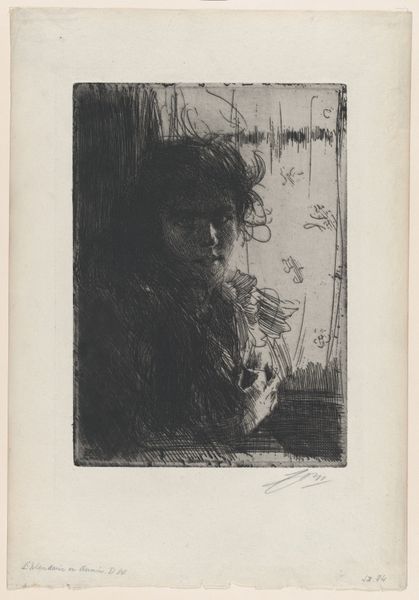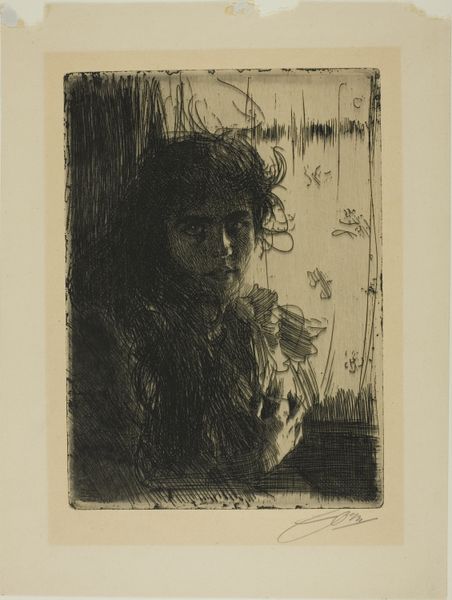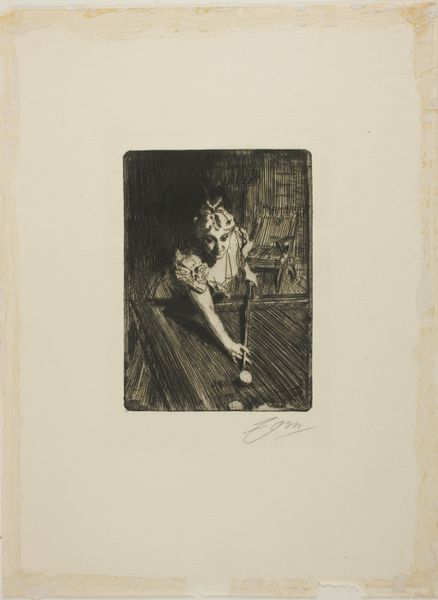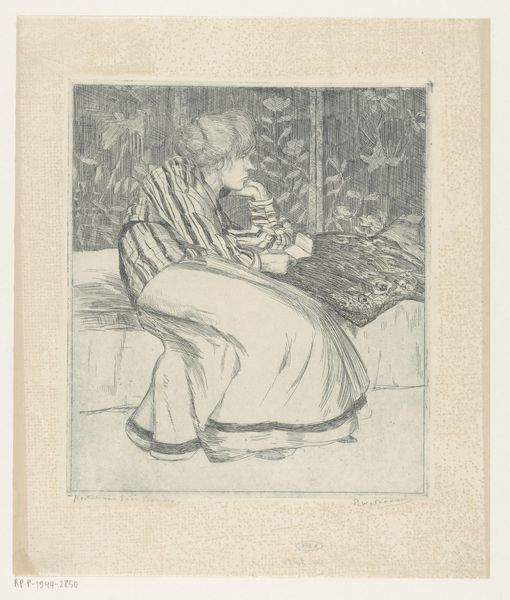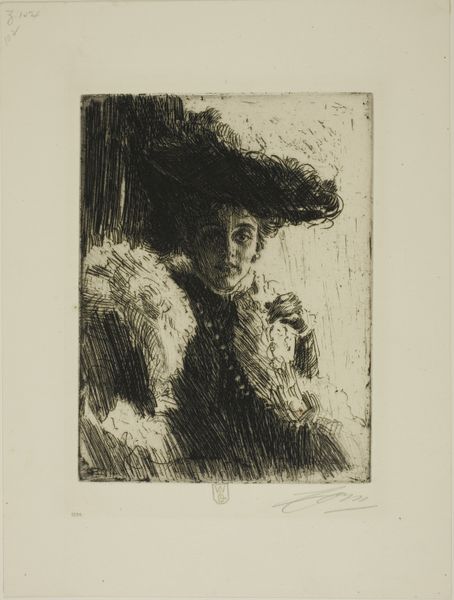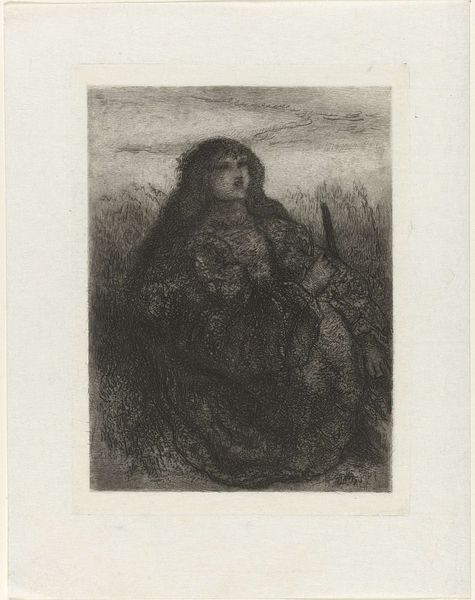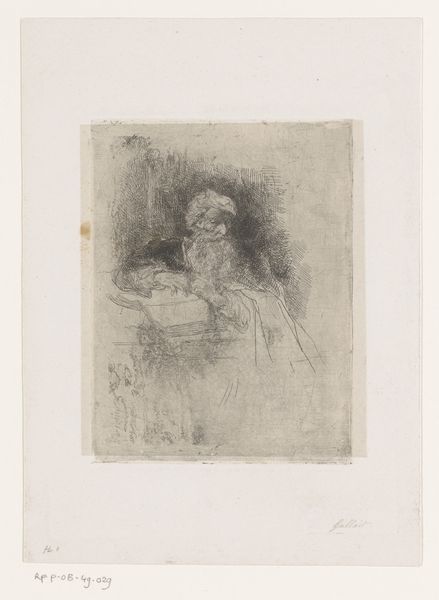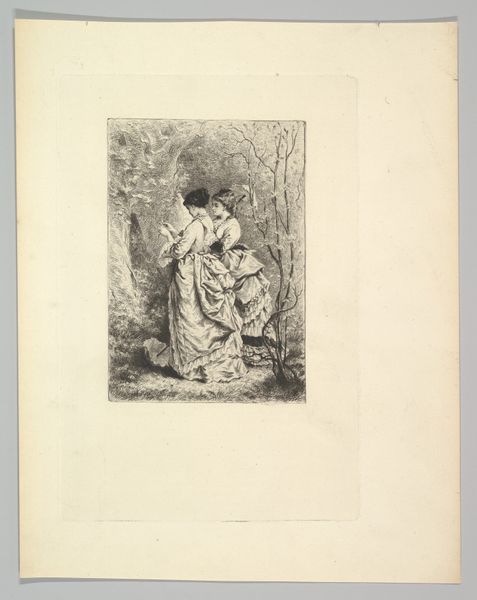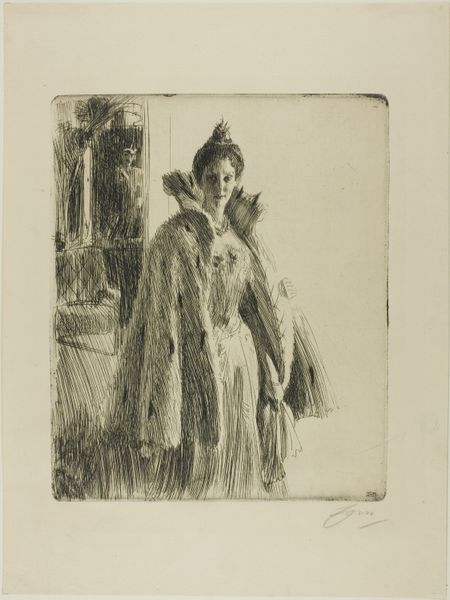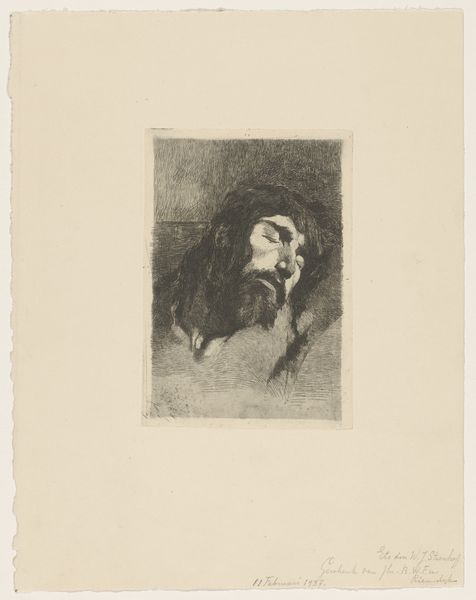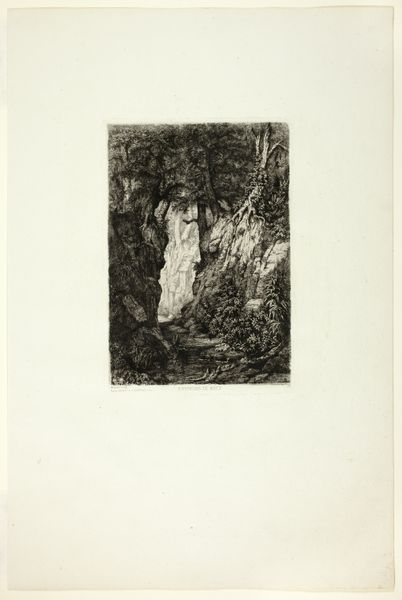
Dimensions: 200 × 151 mm (image/plate); 287 × 230 mm (sheet)
Copyright: Public Domain
Curator: Standing before us is Anders Zorn’s "Mrs. Cotton II," created in 1901. It’s an etching, a type of printmaking on paper currently held in the collection of The Art Institute of Chicago. Editor: My first impression is a certain darkness, even melancholy, emanating from the work. The hatching marks really give it a rough texture, casting a shadow that is difficult to escape. Curator: Zorn was an incredible observer of fin-de-siècle society, and portraiture for him, particularly of women, involved a navigation through social expectations, gender roles, and the burgeoning modern identity. How does this relate, do you think, to the somber impression you perceive? Editor: Perhaps in how Mrs. Cotton is rendered, not as an idealized figure but with a rawness that captures something of the unease of that transitional period. The heavy blacks surrounding her suggest a kind of psychological weight or oppression. It makes me think about what constraints and expectations might have been imposed upon women of that era. Curator: That is an interesting approach. Visually, notice the treatment of her hair – so voluminous and free compared to the severe clothing imposed upon women during that time, in stark contrast to the expectations. I wonder if it might even symbolize a suppressed yearning for liberation. Editor: Yes! Hair has historically symbolized a woman’s sexuality, and this representation, escaping clear definition, speaks to that underlying, potentially untamed power. The gaze as well is elusive, averted, reinforcing the impression of inner turmoil. Is it the symbol of the shifting roles for women at that time? Curator: Exactly! And Zorn, by placing her in this state of shadowed reflection, subtly acknowledges those tensions, adding complexity to what could have been a simple society portrait. She exists not just as herself but a product and representation of the society in which she lived, shifting how the artist engages his sitter. Editor: What began as a straightforward impression has deepened considerably through the context. Zorn uses darkness not just as a stylistic choice but as a symbolic expression of the period’s anxieties about womanhood. Curator: And ultimately shows us a bit about the ongoing social context. Editor: Indeed. There is always much to read between the lines of a portrait.
Comments
No comments
Be the first to comment and join the conversation on the ultimate creative platform.
